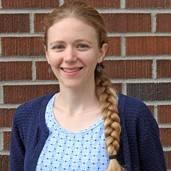Madeleine Gorges
Lecturer

B.A., Spanish; Art, Trinity University
M.A., Developmental Psychology, University of Houston
Ph.D., Developmental Psychology, University of Houston
Email: mgorges1@uw.edu
Teaching
My classroom is a space of active, engaged learning. I enjoy the creative challenge of making key concepts come alive through direct experience. Each day consists of a sequence of presentations, think-pair-share discussions, group activities, quizzes, short videos, and interactive demonstrations. I help the students illustrate and experience the course content in a format other than just written text. In my online courses I create videos that start with feedback about what the students have submitted so that they know I am reading their work and care about the effort they are investing. As I adapt more of my face-to-face classes to the online environment, I am using collaborative technology to enhance online discussions and group work and maintain the important classroom community. I model a growth mindset with my students and love to keep learning and growing from their contributions to the class as well.
I teach regularly at many different schools in the greater Seattle area and enjoy working with students from a wide variety of backgrounds with diverse interests and career plans. My areas of expertise include cognitive psychology, research methods and lifespan psychology.
Recent Courses Taught
BIS 316 Cognitive Psychology
Research/Scholarship
After completing my undergraduate degree, I volunteered as a research assistant in laboratories at the University of Washington studying the neural basis of language. In graduate school I joined the Laboratory for the Neural Basis of Bilingualism at the University of Houston. For my dissertation I studied grapheme-color synesthesia, which is a condition in which some people automatically experience a specific color for every letter and number. Large online datasets such as The Synesthesia Battery allow researchers to study tens of thousands of synesthetes, including bilingual synesthetes with multiple alphabets. Using this big data we can examine patterns in the color-grapheme associations and explore potential developmental mechanisms of this fascinating phenomenon.
